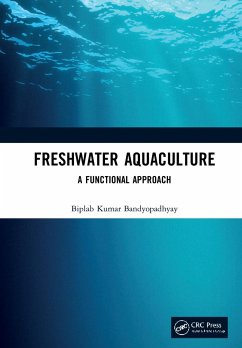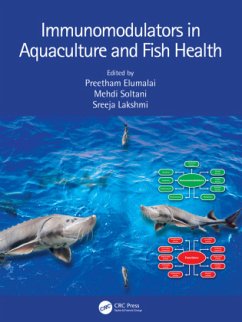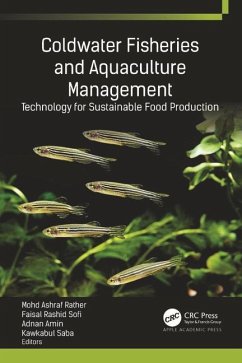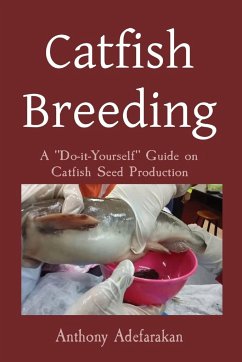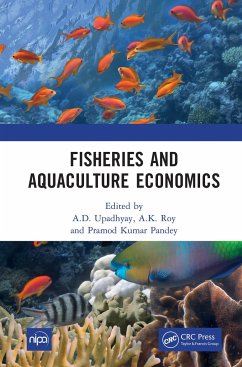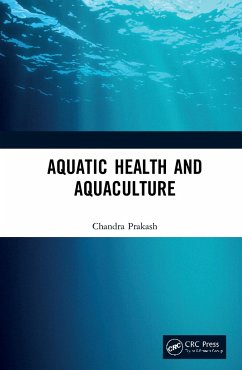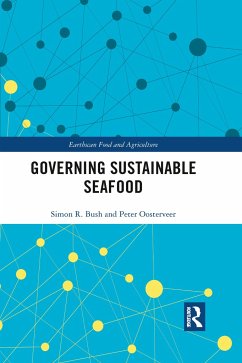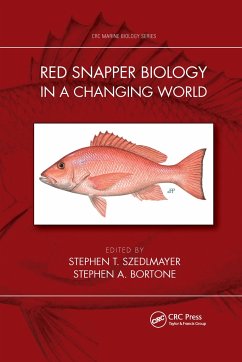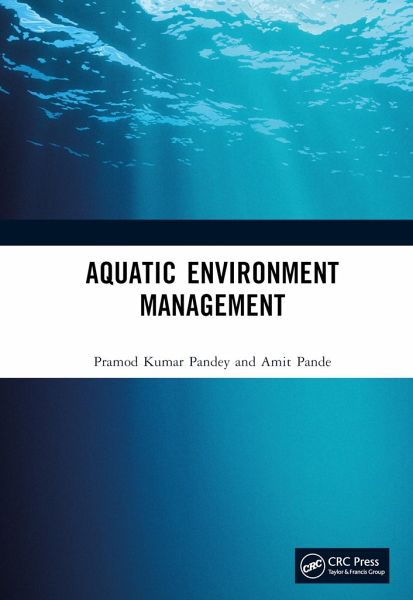
Aquatic Environment Management
Versandkostenfrei!
Versandfertig in 6-10 Tagen
133,99 €
inkl. MwSt.
Weitere Ausgaben:

PAYBACK Punkte
67 °P sammeln!
This reference book collates traditional and modern applications of remote sensing in aquatic ecosystem monitoring. It covers conventional assessment methods like sampling, surveying, and chlorophyll estimation. Advanced remote sensing technology provides timely spectral information for quantitative and qualitative assessment of water changes, volume, and vegetation. The book discusses space-borne, airborne, and drone geospatial data. The five sections broadly cover aquatic ecosystem monitoring, vegetation management, advanced modelling practices, and challenges.Key featuresCovers different ty...
This reference book collates traditional and modern applications of remote sensing in aquatic ecosystem monitoring. It covers conventional assessment methods like sampling, surveying, and chlorophyll estimation. Advanced remote sensing technology provides timely spectral information for quantitative and qualitative assessment of water changes, volume, and vegetation. The book discusses space-borne, airborne, and drone geospatial data. The five sections broadly cover aquatic ecosystem monitoring, vegetation management, advanced modelling practices, and challenges.
Key features
Covers different types of aquatic ecosystems like wetlands, rivers, lakes, saline, and brackishReviews the latest applications of remote sensing in the monitoring and assessment of aquatic ecosystemsIncludes traditional methods like cartography, sampling, surveying, phytoplankton assessment and chlorophyll estimationDiscusses the application of artificial intelligence, machine learning, data fusion in monitoring aquatic systemsExplores the prospects of future Earth observation space missions for aquatic ecosystem monitoring
The book is meant for scientists, professionals, and policymakers working in environmental sciences, remote sensing, and geology.
Key features
Covers different types of aquatic ecosystems like wetlands, rivers, lakes, saline, and brackishReviews the latest applications of remote sensing in the monitoring and assessment of aquatic ecosystemsIncludes traditional methods like cartography, sampling, surveying, phytoplankton assessment and chlorophyll estimationDiscusses the application of artificial intelligence, machine learning, data fusion in monitoring aquatic systemsExplores the prospects of future Earth observation space missions for aquatic ecosystem monitoring
The book is meant for scientists, professionals, and policymakers working in environmental sciences, remote sensing, and geology.





